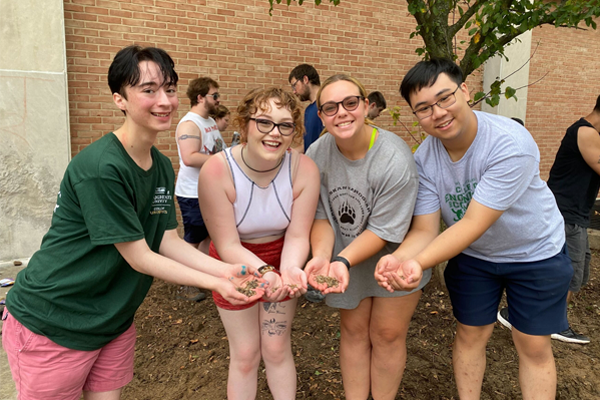
Excerpt from the Wright State Guardian
During the onset of the COVID-19 pandemic, Brad Kerry, the event coordinator for the Indigenous American Culture Student Association and president of Astronomical Collaboration, noticed that the landscaping at Wright State was suffering. As a student with undergraduate and graduate degrees in economics, Kerry sought out ways to reduce university expenditures while also enhancing the physical aesthetic of the university.
Despite some setbacks in the planning stages, such as budget constraints, scheduling issues and physical limitations, Kerry proposed that a 200-square-foot space in front of Fawcett Hall be turned into a wildflower garden. The facilities supervisor for grounds, Michael Newby, was very receptive to the idea, according to Kerry. Newby was unavailable for comment at this time.
As a collaboration between the Asian and Native American Center, the Asian and Indigenous American Council and IACSA, Kerry saw this project as a way to educate the community during a social engagement event.
“Indigenous students, we are here. We are not history, we are present,” Kerry said.
Kerry and the event planners employed the help of Dr. Don Cipollini, director of Environmental Sciences and professor of biology at WSU. With experience in both research and practice working with native plants and plant restoration, Cipollini was able to provide Kerry with advice about the wildflower planting project.
After receiving advice from Cipollini and other environmental science and facilities faculty, the groups decided to plant Purple Coneflower, Black-eyed Susan and Nodding Onion, among other native species.

